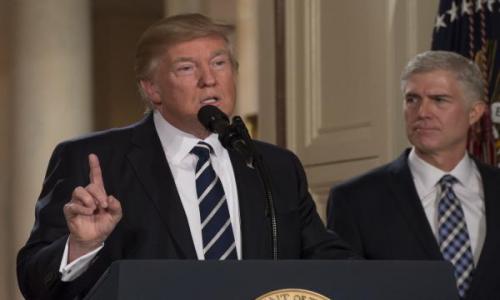There has been a lot of speculation and informed analysis resulting in the somewhat widely accepted conclusion that the United States faces significant increased inflation, and even hyper-inflation, from perennial budget deficits and the unsustainable and constant printing of money.
As a result there's been a general flock away from the US Dollar, into gold and that historically terrible performer, inflation linked bonds. Oil and commodities have also seen a large uptake as investors brace themselves for high inflation and the \"collapse of the dollar\".
Inflation is defined as a rise in the general level of prices of goods and services in an economy over a period of time. When the price level rises, each unit of currency buys fewer goods and services; consequently, inflation is also an erosion in the purchasing power of money, resulting in a loss of real value in the medium of exchange and unit of account in the economy.
Investors worry about inflation because it is the single biggest destroyer of wealth and investment performance. Consider that US inflation currently runs at about 2.63%. An investor will therefore need to make at least 2.64% in his investment over the course of a year to just maintain the same level of wealth. If you are sitting in cash with the highest savings rate of 2%.
It is generally agreed amongst economists that high rates of inflation and hyperinflation are caused by excessive growth of the money supply. Economic theory tells us that long sustained periods of inflation are caused by money supply growing faster than the rate of the economy. Therefore in order for inflation to be high in the US, there must be a high level of growth in money supply exceeding that of GDP.
There are three measures of money supply in the economy. You read about what exactly they are and what they contain in terms of M0, M1, M2 and M3 here. The first is the Adjusted Monetary Base, M0. This is the supply of money that the Federal Reserve has control over. It exploded in the middle of 2008 (click for graph) when rates were close to zero, as they attempted to rescue the financial system by flooding it with money. This is the one monetary aggregate that the Federal Reserve actually controls.The graphs were brought to my attention by John Mauldin, and you can subscribe to his incredible newsletters, which I highly recommend, here.
That in turn caused M1 to increase. Despite this, M2, which is a much broader measure of the supply of money, has gone sideways since the middle of 2009. Under normal circumstances, M2 would grow in line with M0 due to the money multiplier. This multiplier allows banks to lend out money at a higher rate than they otherwise would have been able to, thereby increasing the supply, or availability, of money. Such an increase, as mentioned above, is supposed to increase prices.
Mauldin, in his article, sums up the effects of this situation perfectly: "Restated, increases in central bank money may not result in commercial bank money because the money is not required to be lent out - it may instead result in a growth of un-lent reserves (excess reserves). This situation is referred to as 'pushing on a string': withdrawal of central bank money compels commercial banks to curtail lending (one can pull money via this mechanism), but input of central bank money does not compel commercial banks to lend (one cannot push via this mechanism)."
Basic economic theory states that by increasing the volume of government securities and loans and by lowering bank reserve requirements, the Fed can allow for an increase in the supply of money and bank deposits. However they do not possess the ability to force this change. In the case of a depression (or Great Recession), when monetary policy is meant to be most effective, banks are likely to withdraw from making investment or loans. Banks will not put the new funds to work but will simply hold them as capital. The end result is a substitution from idle cash on the banks' balance sheet to government bonds.
This graph shows precisely this development. A look at the reserves of banks confirms this point. There has been no money multiplier. The first graph shows that the money multiplier is actually negative, meaning any one additional dollar added to the system decreases the money base. As any small business owner will tell you banks are not lending and all that capital has gone into balance sheets and then back to Fed through bond purchases.
In lieu of a long-winded summary I'll let Dennis Gartman, of The Gartman Letter, summarize: "Effectively the Fed had become a cash machine rather than a monetary expansion machine. At the end of last year, the multiplier had actually fallen to less than 1.0 and the trend remains downward. If anyone had told us five years ago that the money multiplier would be down to 1.0 we would have laughed. The laugh, however, would have been upon us, for it is there and it is still falling. Hard it shall be to sponsor strong economic growth when no one really wants to take a loan or when few banks want to make a loan. The \"game\" of banking has been turned upon its head, and the strength of the economy suffers while inflationary pressures (at least for now) remain virtually non-existent.\"












Comments
Sol Nasisi
March 06, 2010
I'm inclined to agree with you. I took a look at Japan where they have been racking up the debt and printing money for the past twenty years. As the charts in the article show, interest rates have actually come down, not gone up (interest rates and inflation are tied at the hip).
http://www.bestcashcow.com/the_economy/article/sol_nasisi/could-interest-rates-stay-low-despite-growing-us-debt-look-at-japan
When everyone started to believe that a rise in rates was inevitable I started to doubt.
Is this review helpful? Yes:0 / No: 0
real_econ
March 06, 2010
Im inclined to disagree with you. Hyperinflation is a currency event. It doesnt have to be like Wiemar Germany. If the COMEX and LBMA run out of Gold or Silver and default. Gold will no longer be available at any price anywhere in the world. This will lead to an abandonment of fiat paper currency known as a currency collapse or hyperinflation.
Research physical gold a little more and you will see that after every fiat paper money experiment in history the people always had to go back to precious medals as money.
Its amazing how arrogant we are as humans, that we think we have mastered the art of money creation and world economy management, when so many of our ancestors blew it in the past.
Tip:
Google-COMEX DEFAULT
To get an idea of whats coming our way.
Is this review helpful? Yes:0 / No: 0
Add your Comment
use your Google account
or use your BestCashCow account